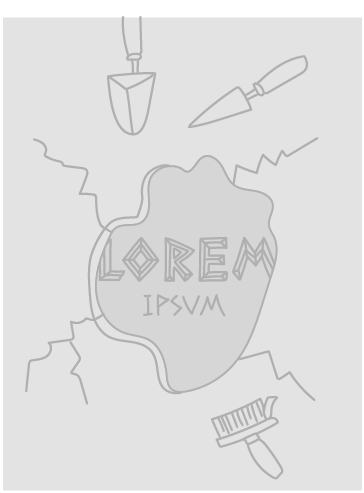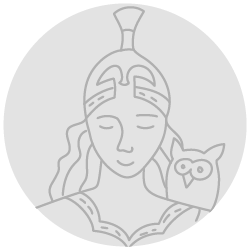Title of the work
Country of the First Edition
Country/countries of popularity
Original Language
First Edition Date
First Edition Details
Lilian Stoughton Hyde, Favorite Greek Myths. Boston, New York and Chicago: D.C. Heath & Co, 1904, 233 pp.
ISBN
Genre
Anthology of myths*
Fiction
Target Audience
Children (schoolchildren)
Cover

We are still trying to obtain permission for posting the original cover.
Author of the Entry:
Robin Diver, University of Birmingham, robin.diver@hotmail.com
Peer-reviewer of the Entry:
Susan Deacy, University of Roehampton, s.deacy@roehampton.ac.uk
Elizabeth Hale, University of New England, ehale@une.edu.au

Lilian Stoughton Hyde
, 1863 - 1947
(Author)
Lilian Stoughton Hyde (b. 19th July, Barker, Broome, New York) was an American teacher, artist and children’s author who wrote the child’s anthology Favorite Greek Myths (1904).
Hyde was the daughter of George Hyde and Susan Beach, and had eight siblings. She graduated from the Woman's Art School of Cooper Union in New York City in 1886 as well as the New York School of Applied Design for Women; at the former she won First Prize in Oil Painting. She then became an art teacher, and wrote Favorite Greek Myths for children at English public schools, which was also published in the US.
She is buried at Riverside Cemetery, Whitney Point, Broome County, New York, alongside her sisters Mary Frances Hyde (b.1864) and Fanny Mansir Hyde (b.1859).
Sources:
Find a Grave (accessed: August 2, 2022).
Library Thing (accessed: August 2, 2022).
Geni (accessed 26th April 2021).
Bio prepared by Robin Diver, University of Birmingham, robin.diver@hotmail.com
Summary
This is a collection of Greek myths for children, told in short and simple form without extensive embellishment for context or characterisation. The stories are based fairly closely on ancient literary sources. Black and white images depicting characters surrounded by artistic lines begin the chapters, but there are no illustrations in the main body of the text. The anthology ends with pronouncing and explanatory guides with further context on elements of the stories.
Featured Stories:
- Prometheus,
- How Troubles Came into the World,
- The Great Deluge,
- Apollo and Daphne,
- How Apollo got his Lyre,
- Mercury and Argus,
- Ceres and Proserpine,
- Phaethon,
- Clytie,
- The Seven Sisters,
- Endymion’s Sleep,
- Why Cadmus Founded a City (Cadmus and Europa),
- Echo,
- Narcissus,
- Hyacinthus,
- Perseus,
- Arachne,
- Jason and the Golden Fleece,
- Hylas,
- Procne and Philomela,
- Bellerophon,
- Tithonus,
- Comatas and the Honey Bees,
- Adonis,
- King Midas,
- The King and the Oak,
- Juno and Halcyone,
- Hercules,
- Theseus,
- Philemon and Baucis,
- Orpheus and Eurydice,
- Ganymede,
- The Bag of Winds,
- Circe,
- Arion and the Dolphins,
- Psyche.
Analysis
In her preface, Hyde states that this book aims to present young readers with Greek myths that have been world favourites through the centuries and have been influential on art and literature. She adds that the myths which appeal to poets and artists are ‘the very ones that have the greatest depth of meaning, and that are the most beautiful and the best worth telling.’ She says that it is important children are introduced to myths young, whilst they can still be enjoyed as stories, because in adulthood the myths will be understood as ‘the embodiment of spiritual truths’. Presumably, myth is thus being implied to reflect truths about Christianity.
Hyde’s introduction explains the anthology in terms of Indo-European theory. ‘Many thousands of years ago there lived a race of people whom we call the Aryans.’ (p. xi.) We are told that to them, everything seems alive and they saw human and animal shapes in nature and felt that there was intent behind the natural world. This led them to invent a sky god, Father Dyaus, and a wider mythology. They settled other lands (no indication that these lands had other inhabitants is given). Hyde comments of Greek myth: ‘Those who told these stories undoubtedly believed that every word was true’, but that the stories still changed with time (p. xii).
The Titans in this anthology are ‘fierce, turbulent and lawless’ (p. 1), and they fight constantly among themselves and against the gods. Prometheus is the wisest of the Titans and advises the others they are imprudent and waste their strength. He tells them if they are to defeat the gods they should choose a leader and stop fighting among themselves. The Titans attack him for this, so he defects to Jupiter’s side. This adaptation of the Titans is similar to the version in Peabody’s 1897 children’s anthology Old Greek Folk Stories Told Anew of seven years earlier. Here, the Titans are also a violent, imprudent race that Prometheus deserts because they do not listen to him. Children’s receptions of this time period seem to have favoured an interpretation of the Titans as brawn over brains who are not intelligent enough to challenge Jupiter.
Immediately after his victory, Jupiter wants to destroy humanity. Prometheus begs him not to, Jupiter relents, and Prometheus celebrates by teaching humanity to be more civilised, leading to the theft of fire and Prometheus’ punishment by Jupiter. Again, this sequence of events, particularly the threatened destruction of humanity, is strikingly similar to the version in the Peabody anthology. It is unclear if Hyde is using Peabody as a source, or if the two have a common source.
In this anthology, Jupiter does not always appear to be a particularly powerful figure. Pluto does not release Proserpine because Jupiter commands it, although Jupiter does indeed command it, but because Proserpine jumps up in excitement when Mercury arrives talking of her release, and Pluto can see how happy she is. This is also therefore a rare early anthology to assign Pluto some positive elements of loving husband characterisation, something that is nearly constant in twenty-first century children’s anthologies.
Unusually, Hyde includes the Pausanias version of the Narcissus story, in which Narcissus incestuously loves his sister and after her death fixates on his reflection in the water because it reminds him of her. Here, however, there are no explicitly incestuous elements; Narcissus simply loves and misses his sister.
Rather than it being the case that only gods can drive the sun chariot, here the mistake that Phaethon is made to realise he has made is ‘that he was too young to drive such horses.’ (p. 38.) It is thus implied that Phaethon, human son of a god, might have grown up to be a safe figure to drive the chariot if he had simply waited. The message seems to be about children not attempting to do adult things, not the separation between humans and gods.
Perhaps surprisingly, given Hyde’s artistic background, this anthology is not fully illustrated; instead, chapters begin with a small circular black and white drawing of a character above the chapter heading, surrounded by artistic lines suggestive of Greek plants. The illustrator is uncredited, presumably Hyde herself.
Addenda
Page numbers given here refer to Lilian Stoughton Hyde, Favorite Greek Myths, Chapel Hill, North Carolina: Yesterday’s Classics, 2008.


